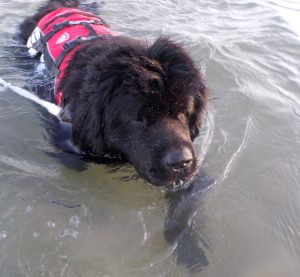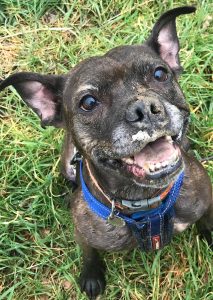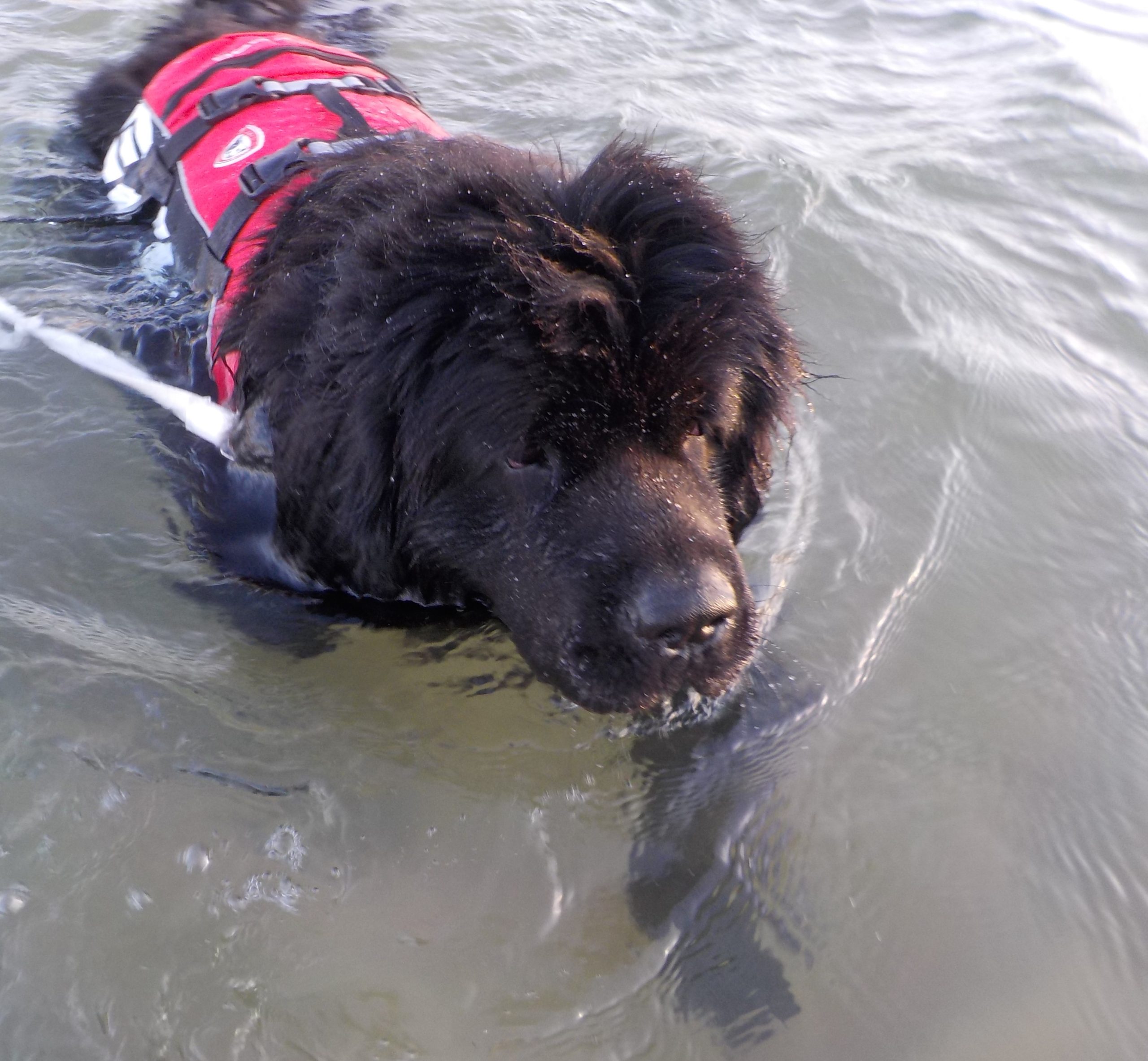You may have heard your Club instructors stating that we train through ‘positive reinforcement’ and that we ‘avoid aversives’ that might be punishing for your dog so I thought it might be useful to look in a little more details what these things really mean.
Behaviourists split our responses to our dog’s behaviours into 4 broad categories –
| Positive reinforcement | Negative reinforcement |
| Positive punishment | Negative punishment |
A reinforcement response is something that increases the likelihood that your dog will do a particular behaviour
A punishment response is something that decreases the likelihood that your dog will do a particular behaviour.
Let’s look at each in a little more detail.
Positive reinforcement
The dog performs a behaviour (e.g. sit) and gets a reward for it.
e.g. You ask for a sit, he sits, he gets a treat or a fuss. Reinforcers can be anything that your dog finds pleasant and enjoyable… here’s what I think are my dogs’ top 5 reinforcers are:
| Levi: | Shenzi: |
| Treats delivered from the hand; Ear rubs; Water – the muddier the better; Play with lots of movement of the toy; Treats on the floor. |
Tug play – with lots of force; Chasing – something furry, or a ball; Tossed treats so she has to chase them; Belly rubs; Snuggles. |
 |
 |
What do your dogs most enjoy? Can you incorporate it into your training?
Positive reinforcement is the main way we help our dogs to learn, but we need to be careful, sometimes we positively reward the wrong thing by accident,
e.g. Your puppy wants to play, he’s excited so he jumps up. You try to push him off, which involves physical contact, and he thinks this is all part of the game. He’s been rewarded for jumping up by having hands on him and attention.
And sometimes what they find rewarding isn’t appropriate or safe
e.g. Shenzi is definitely not allowed to chase down small furry creatures, and I have to be careful with balls and tug toys as she can become overexcited.
Negative Reinforcement
Causing something aversive (unpleasant) to happen to the dog until the dog does a behaviour
e.g. a traditional method of teaching a dog to open its mouth was to pinch its ear until the mouth opened, the dog eventually learns that mouth-opening stops the pain.
Positive punishment
Doing something aversive in response to an unwanted behaviour.
e.g. Kneeing a dog in the chest because he/she jumps up. This can cause injury to both the dog’s chest, and the person doing the kneeing (if 60kg of Levi jumped up at me whilst I was standing on one leg, there’s no way I’d stay standing!)
e.g. Lead yanking, or any device (e.g. ‘anti pull’ harnesses, headcollars, slip leads, choke collars and figure 8 leads) that tighten under the arm pits, round the neck or around the muzzle when the dog pulls. These devices work by causing discomfort or pain every time the dog pulls (exactly when discomfort becomes pain is a difficult judgment to make – but they wouldn’t have any effect if they weren’t unpleasant in some way).
Negative Punishment
Taking something away that the dog finds pleasurable or desirable
e.g. taking away your dog’s bowl when they are eating (that’s why doing this can lead to food guarding, the dog is minding his own business tucking into his grub and is randomly punished for no reason)
e.g. Withholding a treat when a dog fails to respond to a cue. This is mildly punishing to a dog. Confident dogs will cope with this if it doesn’t happen all the time, but anxious dogs can lose confidence and eventually stop trying. A classic example of this is teaching young puppies a ‘down’. We tend to teach ‘sit’ first and reward lots for sit. Then we start to teach down by first putting the dog into a sit, but we forget to reward him for that before asking for a down.
As puppies mature certain behaviours become so ingrained and well-practiced that they don’t need rewarding all the time, so that they can string several behaviours together and be rewarded at the end, but when a behaviour is newly learned it should be rewarded, at least with verbal praise, each and every time.
Summary
So in summary positive reinforcement is pleasurable to the dog, all of the other 3 responses are aversive i.e. something they’d rather avoid. So why do we emphasise using positive reinforcement as much as possible? Is it just because we like being nice to our dogs?
Well that might be part of it, but there is also a wealth of evidence that demonstrates that positive reinforcement just works better for teaching our dogs. Several studies such as this one Positive Reinforcement is More Effective at Training Dogs than an Electronic Collar, Study Shows (companionanimalpsychology.com) back this up. Dogs aren’t children – there’s really no point trying to ‘discipline’ them as they rarely understand that the punishment is a consequence of their behaviour. But they can make associations between a behaviour and an immediate outcome, and learn much better when those outcomes are positive.
Positive reinforcement
- Increases confidence as dogs get a happy hormone ‘buzz’ from getting things right;
- Is harder to get wrong – if you accidently reinforce at the wrong time your dog just gets a bonus reward (you would have to get it wrong repeatedly and consistently to accidently teach the dog the wrong thing);
- Builds your relationship and bond with your dog;
- Makes training fun.
- Always works. In fact a behaviour that has been heavily rewarded often barely needs rewarding at all, once its well-learned, as the dog associates the behaviour with pleasant things and loves to do it.
Aversives
- Decrease confidence and reduce the likelihood that dog will want to try to do something;
- Is easier to get wrong (if sufficiently strong enough, just one aversive response can make a dog fearful and hesitant);
- Damages the relationship between you and your dog and possibly injures the dog, e.g. choke collars can harm a dog’s throat, headcollars can cause neck pain etc.
- Is not fun.
- Works less well over time – either the dog ‘habituates’, i.e. gets used to the aversive and ignores it, so the aversive has to get stronger and more severe to still be effective, or the dog becomes loses confidence and refuses to train.
One final note – do positive reinforcement trainers never use aversives? I think most would be lying if they claimed that to be the case. Who hasn’t grumpily told their adolescent dog ‘No!’ when they’ve gotten overexcited and pulled you over or tried to jump into the road? Who hasn’t accidently missed rewarding a behaviour? Or over-trained, asking for one more repetition of a behaviour not realising that the dog was too tired, bored or confused to perform? The take home message is to not worry about being perfect but to recognise that aversives serve no real purpose and to eliminate them whenever possible.

